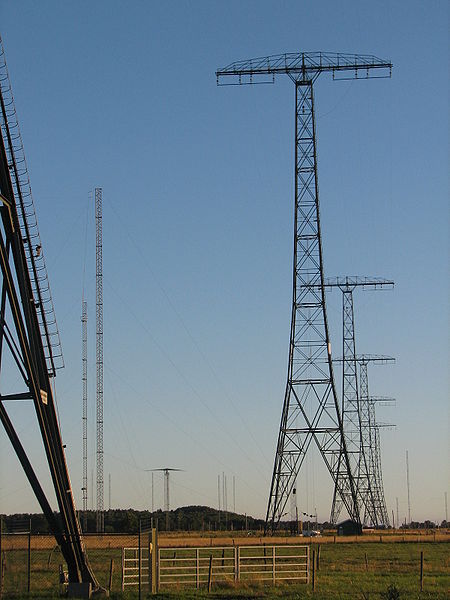 Hats off to the crew at the UNESCO World Heritage Grimeton Radio Station!
Hats off to the crew at the UNESCO World Heritage Grimeton Radio Station!
Today is Sunday July 4, 2021. Besides being Independence Day here in the States, it’s also Alexanderson Day in Sweden!
This morning, I discovered a video on the Grimeton Station YouTube channel: a recording of their live stream live stream starting around 08:30 UTC today.
In the video, you can watch the crew of the Grimeton station startup, tune, and transmit on their 1924 Alexanderson Alternator with the callsign SAQ. Their message is sent in CW on 17.2 kHz. The video is absolutely fascinating and I highly recommend watching it. The startup and tuning procedure are simply amazing. I can only imagine the dedication and resources it takes to keep this marvel of 1920s engineering fully functional today:
Click here to watch on YouTube.
Happy July 4th, everyone!

I will remember this video next time I turn on my Icom and it’s doing its 5 seconds of boot-up and self-test stuff and me going like “c’mon, hurry up, not getting younger here”. 🙂
HA HA HA!!!
I always forget to start the water coolant pumps when I boot up the ‘705.
Lol!
Probably Icom has limited product offerings with 17kHz transmit capabilities —particularly at the 200KW power level —no? 😉
Remembered just in the nick of time to catch from work (grave yard / 3rd shift). Can’t monitor from here (noise floor ridiculously high) but neat to watch live and the live chat.
Since so few replies here as I write this, I’ll summarize: on morning transmission no one heard the signal outside of Europe except KL7L in Alaska. On the noon (2nd) TX, there was at least one catch in the SE US (Alabama or Arkansas) and another in Quebec I think. Nothing elsewhere though comments state those that could probably receive it were not listening (Brazil in particular).
As for me, towards the end of the 2nd TX I thought of something & fired up the Utah WebSDR which has a bunch of Kiwis: no SAQ but NMC in Exmouth, (North) Western Australia was BOOMING in along with the usual USA stations (and, strangely, no one else). This on a wire log-periodic rated for 3-30 MHz, not optimized for (V)LF at all.
Hope this helps!
It occurred to me some time later that the power difference between SAQ and NMC is somewhere between 10 and 100 times (10-20dB). While SAQ likely has better grounding (wet soil in Scandinavia versus the tropical Australian desert in “winter”), NMC’s Goliath umbrella clone is likely far more efficient on top of actual 1MW+ actual ERP. Finally, for the N. American west coast (assuming a final bounce by sky wave from the ocean to northern Utah) the path is almost completely salt water unlike SAQ.
As many have pointed out, there is also the season, with lots of lightning; I have not yet seen what conditions were like on the amateur 137 & 475 KHz bands that day.
Then there is the wild card: the first X-class flare in 4 years along with several M-class before and after! (The sun spot in question, 2838, formed and quickly was moved behind the limb but is STILL flaring and blowing CMEs as I write this: see https://spaceweatherarchive.com/2021/07/05/first-x-flare-of-solar-cycle-25 ; it will be back in 2 weeks if it is still holding together)
Simply amazing. I spent some additional time on Wikipedia for details. I never know this step in the evolution of wireless transmission existed.
I was able to hear the 0900 UTC transmission here on the east coast of the UK at RST 529. I used my RSPDX and Wellbrook loop. This and the BBC Antarctic broadcast are always eagerly awaited and fun to tune into.
73, David – G4EDR
You’re in the UK, you can hear it with the proverbial wet noodle! 😉 May have to null out Anthorn & Rugby though.